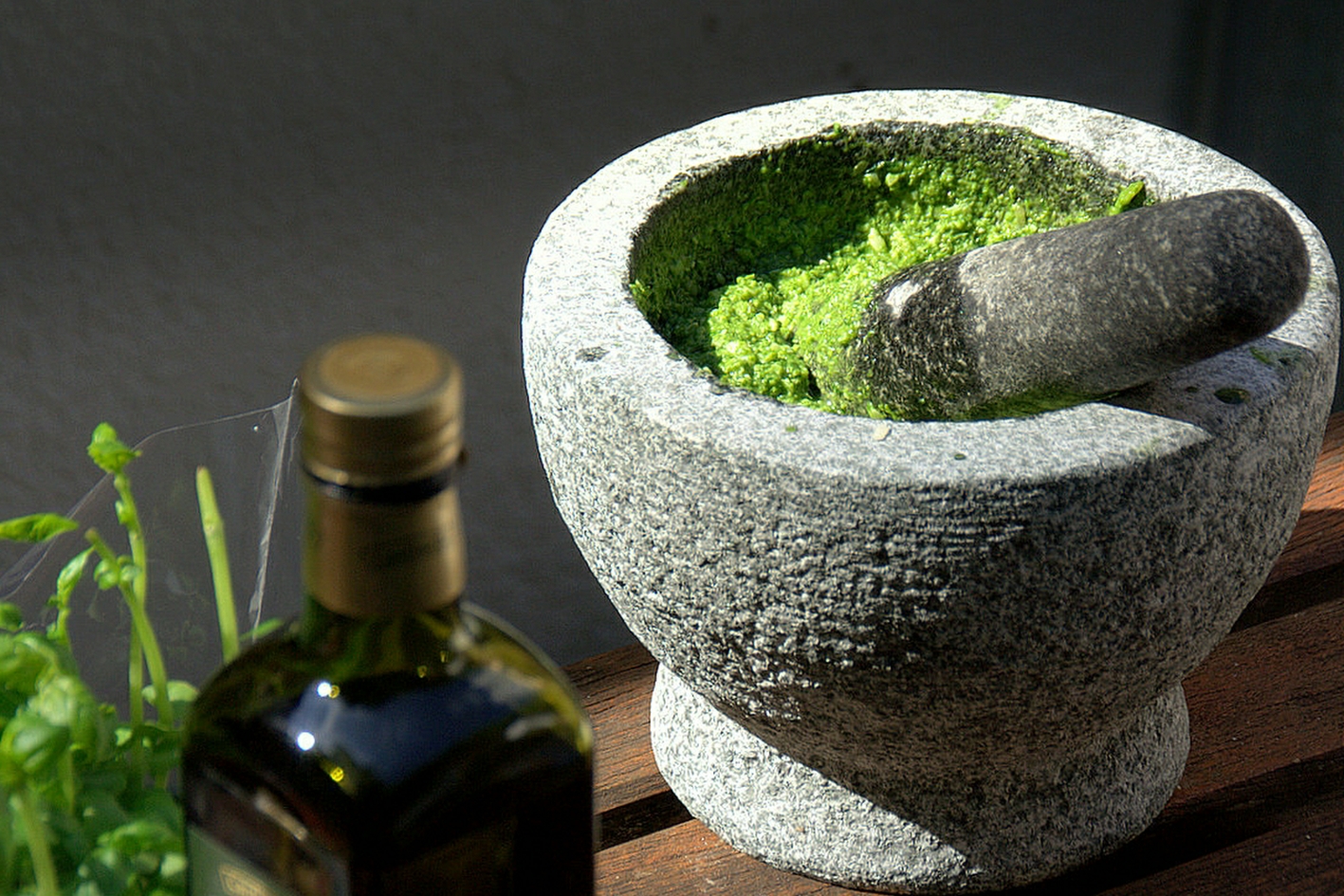
The finest is traditionally made with a mortar and pestle
" The modern recipe emerged in the 19th century although it owes its heritage to older crushed sauces "
Pesto alla genovese is a traditional condiment originating from the Liguria region of north-western Italy whose capital is Genoa. The first historical reference to a similar preparation dates back to Roman times. The modern recipe emerged in the 19th century although it owes its heritage to older crushed sauces.
The earliest written recipe is found in La Vera Cuciniera Genovese by Emanuele Rossi (1852), referred to as pesto d’aglio e basilico. Historically, the rural version likely omitted Parmigiano Reggiano which was rarely available to the Ligurian working class. Locally made pecorino cheese from the Genoese Apennines was used instead.
According to tradition, the seven key ingredients are:
- Young basil leaves from Pra’: Grown in the Pra’ district of Genoa, this basil is characterized by its mild, non-mentholated flavour and has a protected designation of origin (PDO).
- Extra virgin olive oil from the Ligurian Riviera: This oil is light and delicate, typically with a sweet, fruity profile, often made from Taggiasca olives and PDO-certified.
- Pine nuts
- Aged Parmigiano Reggiano (at least 30 months): The aging ensures it does not melt when mixed with pasta cooking water.
- Fiore Sardo pecorino: PDO-certified and aged for at least 10 months.
- Garlic from Vessalico: Known for its milder flavour.
- Coarse sea salt: Preferably intense in flavour, such as that from the Trapani salt pans.
Whilst commercially available pesto is typically made using a blender, traditional pesto alla genovese is made using a mortar and pestle. The commercial blending method can oxidize the basil leaves and warm the mixture, altering its taste.
The traditional preparation involves:
1. Crushing garlic cloves (about one clove per 30 basil leaves) in a marble mortar using a wooden pestle.
2. Adding basil leaves in layers with coarse salt, grinding them with circular movements of the pestle while rotating the mortar in the opposite direction to break the leaves gently and release their aromatic oils.
3. Once the basil releases a green liquid and forms a smooth paste, pine nuts are added, followed by the grated cheeses (in a 2:1 ratio of Parmigiano to Fiore Sardo).
4. Extra virgin olive oil is drizzled in last to bind the mixture and act as an antioxidant.
The process must be completed quickly to prevent oxidation. The final sauce should be a thick, uniform, light green cream.
Before using as a pasta sauce, pesto can be diluted with pasta cooking water to achieve the desired consistency. For minestrone, no dilution is necessary. It is traditionally served with dishes such as trofie, trenette, gnocchi, or lasagna and often paired with potatoes and green beans.
Pesto alla genovese is protected as a “Traditional Agri-Food Product” of Liguria by the Italian Ministry of Agriculture. It is regulated by a consortium that maintains strict ingredient standards. However, commercially sold pesto often includes substitutes such as seed oils, cashews, or colour-enhancing parsley, deviating significantly from the traditional recipe.
Since 2007, Genoa hosts the biennial World Championship of “Pesto al Mortaio” (pesto made by mortar) celebrating the authentic preparation of this iconic sauce.
Prepared by a Chaîne News Online Staff Writer
Researched from various sources. E&OE
A vision of gastronomy that goes beyond technique